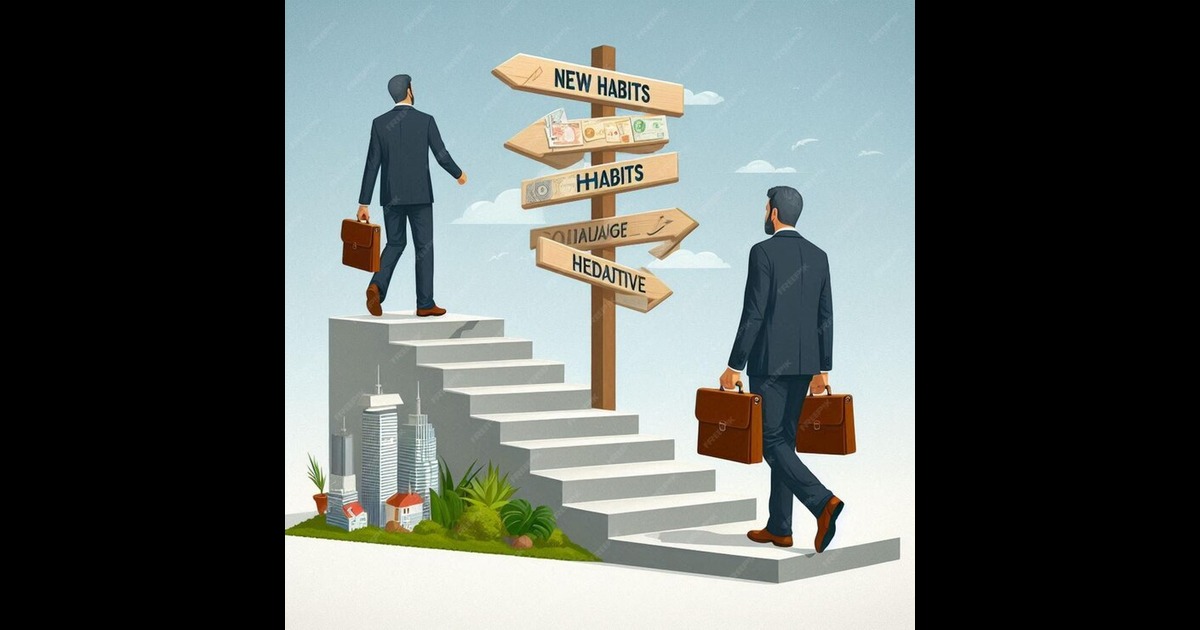Our future is shaped by the opportunities, decisions, and challenges we face. One of the most critical decisions is choosing the right path to success. Often, there are two clear strategies—or “2 paths”—that we can follow. These paths may differ depending on the individual and their goals, but generally, they fall into two categories: the conventional path and the non-conventional route. Each of these requires a different mindset, skill set, and approach, but both can lead to success. Let’s take a closer look at these “2 paths” and find out which one suits you best.
Path 1: The Traditional Route
The traditional route is familiar to most people. This path typically involves completing formal education, securing a stable job, advancing up the corporate ladder, and eventually retiring with a sense of accomplishment.
Benefits of the Traditional Path
Stability and Predictability: The traditional path offers a steady paycheck and a structured career. It allows for long-term financial planning, which brings a sense of security.
Clear Steps to Success: For many, the clarity of the traditional path is comforting. There are well-defined milestones from entry-level positions to mid-management and, eventually, senior leadership roles.
Social Recognition: Society tends to value and respect those who succeed in traditional careers. Following this route can garner admiration from peers and family members alike.
Challenges of the Traditional Path
Limited Creativity: While stability is an advantage, the traditional path can sometimes limit creativity. You may find yourself adhering to fixed procedures with little room for innovation.
Long-term Commitment: Climbing the corporate ladder requires years of dedication. Achieving the highest levels of success can take decades, which might be frustrating for those who seek quick results.
Risk of Burnout: The pressure to meet corporate expectations, along with long working hours, can lead to burnout, affecting both your physical and mental well-being.
Path 2: The Unconventional Route
The second of the “2 paths” is the unconventional route. This path is for those who prefer to take risks, think outside the box, and carve out their unique journey to success. It is often associated with entrepreneurship, freelancing, or pursuing a creative passion that may not fit into the typical career structure.
Benefits of the Unconventional Path
Creative Freedom: The unconventional route allows individuals to explore their passions and be creative. Whether it’s launching a business, inventing something new, or working on a passion project, this path provides the freedom to express ideas in unique ways.
Potential for Higher Rewards: While the risks are higher, so are the potential rewards. Entrepreneurs, for instance, have the chance to earn significantly more than traditional employees if their venture succeeds.
Flexibility: Those on this path often enjoy greater flexibility in their work schedules. This freedom allows people to structure their days around projects that truly inspire them.
Challenges of the Unconventional Path
Uncertainty: Unlike the traditional route, the unconventional path is filled with uncertainty. There’s no guaranteed paycheck, and success is never a sure thing.
Greater Risk: With the possibility of high rewards comes high risk. Entrepreneurs may face financial losses, and there’s always the chance that a project or business could fail.
Lack of Support: Because the unconventional route is less common, it might be harder to find encouragement from family or friends. People may be skeptical or unsure about your choices.
Choosing Between the 2 Paths
There is no universal answer when it comes to deciding between these “2 paths.” The right choice depends on your personality, risk tolerance, and long-term goals.
Assess Your Goals: What do you want in the long term? If stability and structure appeal to you, the traditional path may be a better fit. If you thrive on passion and creativity, and you’re willing to take risks, the unconventional path could be more rewarding.
Understand Your Risk Tolerance: The traditional path offers security but limits opportunities for rapid advancement or big leaps. If you are risk-averse, you may prefer this route. However, if you’re comfortable with uncertainty and setbacks, the unconventional path might be more fulfilling.
Consider Your Skills: Certain skills align better with each path. Those with strong leadership, organizational, and technical abilities may excel in the corporate world. If you are creative, entrepreneurial, and innovative, the unconventional path could allow you to realize your full potential.
Conclusion
Both “2 paths” can lead to success, but the journey will differ depending on the route you take. The traditional path provides stability, predictability, and social recognition, while the unconventional route offers creative freedom, flexibility, and the possibility of greater rewards. Neither path is inherently better than the other; the key is choosing the one that aligns with your personal goals and values. Whether you follow a well-established path or forge your own, staying true to yourself is essential. Both paths come with challenges, but they also offer immense opportunities for growth and success. Ultimately, the decision is yours, so make sure the path you choose reflects who you are and what you want from life.
FAQs
Can I combine both paths?
Yes, many people blend elements of both routes. Some start with a traditional career before transitioning to entrepreneurship. Others maintain a stable job while pursuing a side business or freelance work.
How can I know if I’m on the right path?
The right path aligns with your values and long-term goals. Reflect on your happiness, achievements, and personal growth regularly to assess if you’re moving in the right direction.
Is one path better than the other?
Neither path is superior. Both can lead to success, and the right choice depends on your personal strengths, interests, and lifestyle preferences.
Can I switch paths later in life?
Absolutely! Many people change their course at different stages in life. For example, someone might leave a corporate job to start a business, or vice versa.










